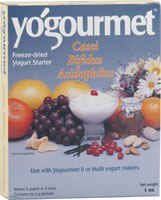One of the most precious gifts your mother gave you was the first bacteria that inhabited your gut. The trillions of micro-organisms in our intestine form a community that begins the day we are born. You were born empty with no organisms in your gut. In a normal vaginal birth, a baby will pick up a healthy dose of its mother’s micro-flora. In birth by C-section, however, the babies will slowly be influenced by many environmental factors and it may be months before their gut ecology is firmly established.
As advocates of breastfeeding know, breastmilk is a rich source of probiotic bacteria, specifically, the species Bifidobacterium or bifidus. A child develops the most healthy gut ecology at its mother’s breast. In a breastfed child, about 80-90 percent of the bacteria in their intestine are Bifidobacterium, and that’s why breastfed kids are healthier. Unfortunately, the proportion of our gut flora that are this Bifidobacteria begins to diminish as we grow older, and, by the time we become an adult, may virtually vanish … if not by the ravages of time, than by overused antibiotics.
So, you may ask, why should you care about the bacterial zoo in your gut? About 70 percent of cells involved with immunity are in the lining of the intestine. A healthy gut is the key to overall good health. If the lining of your intestine becomes inflamed, it may become more permeable allowing the inflammation to leak out into other parts of the body. This can lead to the chronic inflammation condition that is present in most chronic diseases. I believe that gut inflammation is one of the root causes of Type 2 diabetes and its complications.
Since I have just been writing on making your own yogurt, you might guess that I am going to tell you that yogurt is the best way to replenish the healthy probiotic bacteria in your gut. Well, yes and no. It is possible to make yogurt that contains Bifidobacterium, but 99.9 percent of commercial yogurt does not have it and very few yogurt starters contain it. Commercial yogurt usually just has L. Bulgaricus in it for a nice consistency and S. thermophilus to ferment the milk to a pleasant tartness. The S. thermophilus will not survive your stomach acid. The L. bulgaricus will make it to your gut where it will discourage the growth of some harmful bacteria for a short time, but it passes through without colonizing the gut or making any long-term improvement.
Bifidobacterium is a colony forming bacteria. It improves the neighborhood so the thugs of bacteria world like E. coli and salmonella do not take over and any Helicobacter pylori that are still around are better behaved. Your gut will be very happy with Bifidobacterium back on the block. So, how to restore it if time and antibiotics have vanquished your old childhood friend?
Maybe you can pop some pills. There are many varieties of Bifidobacterium that can be found in commercial probiotic supplements. Remember, however, that these are live organisms and life in a gelatin capsule in a bottle stored in a warehouse, store shelf or medicine cabinet for months may not be that hospitable. Probiotics deteriorate rapidly in less than perfect conditions. What was an excellent product when it was produced may have few if any live organisms in it when you take it. Any remaining Bifodobacterium will need to run the gauntlet from mouth to intestine. Some can survive harsh stomach acid, but they do much better if there is food present to lower the pH of the stomach acid a little. Which brings me back to my favorite food.
Yes, you can make yogurt that contains Bifidobacterium. You still use the standard two yogurt making strains, but you can find specialized cultures that have some Bifidobacteria and other probiotic strains. Usually, they will also add some Lactobaccillus strains, too, especially L. acidophilus. The Yógourmet line of home yogurt making cultures has one specialized product with three added probiotic strains.

You can find Yógourmet probiotic starter here.
Personally, I like the taste of yogurt fermented with a little bifidus added to the culture. It seems to have a slightly more cheese-like flavor. In the interest of full disclosure, however, I must say that consistency is not quite like the "swirly goodness" of the Pinkberry Frozen Yogurt store. It can be a little slimy. If you drip it to make a Greek style yogurt, it improves the unusual viscosity and I find it quite OK. More importantly, my family’s main yogurt aficionado, my two-year-old son, greatly prefers Daddy’s yogurt to Dannon’s or Yoplait’s. And, my son’s impeccable taste is only exceeded by his radiant health.
+chronic+disease.jpg)

add one packet of gelatin per half gallon (two liters)milk.., make certain the milk is brought to near boiling. stirring constantly...and the yogurt will be nice and firm..like eating a cloud
ReplyDeletebj